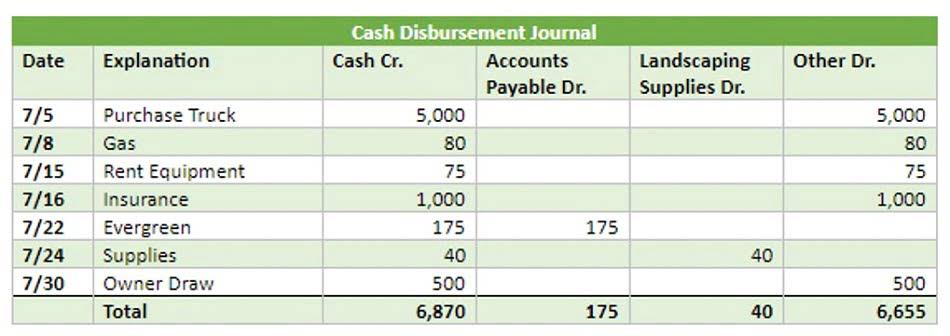Content
- The Division of Financial Affairs
- Credits & Deductions
- You need a written loan agreement to prove your bad debt loss
- Reporting Bad Debts
- Easily Write Off Bad Debt with Dynamics 365 for Finance
- Allowance for Doubtful Accounts and Bad Debt Expenses
- Write Off Transactions from the Collections Form
- Editorial Integrity
- Establish a Bad debts account

If they don’t, it can be frustrating and hurt your business. You need to know how to write off bad debt when this happens. For instance, a business owner may decide to loan money to a client who is expanding their business in a way that will financially benefit both parties.
While we strive to provide a wide range offers, Bankrate does not include information about every financial or credit product or service. Bad debt can be reported on the financial statements using the direct write-off method or the allowance method.
The Division of Financial Affairs
If that friend files for bankruptcy and can no longer reasonably pay you back, you now have a bad debt. For many business owners, it’s possible to get a bad debt deduction on their taxes to help regain some of what was lost.
- Of course, you should work on creating a payment plan that minimizes unpaid customer invoices.
- Under this form of accounting, there is no “Allowance for Doubtful Accounts” section on the balance sheet.
- However, a borrower may file for bankruptcy in November 2021 without having paid anything on the loan, making that debt a worthless bad debt before the loan’s deadline.
- After all, unpaid invoices can wreak havoc on your business finances.
- This can create disturbances in the overall accounting process, so professional accounting firms do not prefer using the direct write off method.
- The table below shows how a company would use the accounts receivable aging method to estimate bad debts.
- In most cases, you can reclaim tax paid on bad debts; and it’s a form of bad debt relief applied to both accounts receivable and accounts payable.
You can write off your customer’s invoice by posting a credit note to your Bad Debts nominal ledger account. This offsets the bad debt against your profit for the current financial year.
Credits & Deductions
You included $2,500 in your gross income, but you now need to write off the bad debt, which decreases your cash flow by $2,500. There’s a variety of ways to address unpaid loans or bad debt including writing these items off and deducting them from taxes. Before taking any of these steps, however, it’s important to make attempts to collect the debt and document all of your efforts. The direct write-off method involves writing off a bad debt expense directly against the corresponding receivable account. Therefore, under the direct write-off method, a specific dollar amount from a customer account will be written off as a bad debt expense. The income statement will account for the bad debts expense nearer to the time the sale or service was granted. A business deducts its bad debts, in full or in part, from gross income when figuring its taxable income.
You will only need to complete this step the first time you enter a bad debt. Bad debt write-offs are used when you have a specific and recognisable bad debt on your accounts. In the bad debt write-off method, you’ll debit the bad debt expense for the amount of the write-off and credit the accounts receivable asset account for the same amount. The estimated percentages are then multiplied by the total amount of receivables in that date range and added together to determine the amount of bad debt expense.

When money owed to you becomes a bad debt, you need to write it off. Writing it off means adjusting your books to represent the real amounts of your current accounts. “Assuming that you can deduct a debt in a specific year, it may make sense to delay or accelerate bad debt deductions as part of your overall tax planning strategy,” says Brim. Before you can deduct a bad debt, however, this debt must be worthless. In other words, the debtor must have completely stopped making payments, and you must have strong reason to believe that they’ll never pay you back. If a business owner loans money to an individual and the person cannot repay the loan, what happens?
Nonbusiness Bad Debts – All other bad debts are nonbusiness. Nonbusiness bad debts must be totally worthless to be deductible. You can’t deduct a partially worthless nonbusiness bad debt. For debts not recorded on student accounts, the department will be instructed on the proper journal entry to record the write-off in the general ledger. The department will be responsible for maintaining adequate records regarding the financial obligation still owed to the University. If the original debt was the result of a sales invoice, the journal entry leaves the income in the income account where it was first posted. But that income is offset by the expense in the Bad debt account.
You need a written loan agreement to prove your bad debt loss
The uncollectible receivable now appears on your Profit and Loss report under the Bad Debts expense account in Quickbooks Online. This will also be reflected on the invoice and reporting in LeanLaw. It’s an effective safeguard against https://www.bookstime.com/ bad debt and provides confidence to trade. Bad debt insurance from Allianz Trade not only protects businesses, but also providesmonitoring and financial information about your customers and prospects, and knowledge of marketplaces.
This can be the most efficient and least expensive way to recover at least some of the unpaid balance. In this method, the seller of a product will add the debt amount to their bad debt expense account. This is done once it is confirmed that the consumer will not pay back their debt.
Reporting Bad Debts
In order to prove you made the loan with the intention of being repaid, you must present a written loan agreement signed by both parties. Technically, a handwritten agreement counts—but it’s always best to use a formal contract with clear terms . For more information on the above terms, read about the direct write-off method here and the allowance method here.

I am a Certified Payroll Professional and Advanced Certified QuickBooks ProAdvisor, providing payroll and accounting services to businesses. I joined the Hawkins Ash CPAs Green Bay, WI, office in 2003. Discover how to collect late payments from customers and the measures you can take to prevent them. Generally, the premium for your bad debt insurance is calculated depending on your sector of activity and your turnover. Check which outstanding accounts receivable should be written off.
Easily Write Off Bad Debt with Dynamics 365 for Finance
While it’s not recommended for regular use, if your business seldom has bad debt, it can be a quick, convenient way to remove bad debt from your books. An entry is created in the Accounts by Financial BP Group session to define the account to be debited, for Account Receivable, which cannot be collected and must be set as bad debts . In the Ledger Account field, the General Ledger account that must be used to debit, in case, Accounts Receivables are written off is specified. A bad debt is an amount owed to a business or individual that is written off by the creditor as a loss because the debt cannot be collected and all reasonable efforts to collect is exhausted. The amount of bad debt is considered as an expense that is calculated based on the Direct Write Off or Allowance Methods.
In the first case, debit Bad debts for the gross amount of the debt, including taxes. Credit the asset account where the debt is recorded by the same amount. For example, Wayne spends months trying to collect payment on a $500 invoice from one of his customers. However, all of the invoices and letters he has mailed have been returned.
This website is using a security service to protect itself from online attacks. The action you just performed triggered the security solution. There are several actions that could trigger this block including submitting a certain word or phrase, a SQL command or malformed data. It could also be that you’ve extended credit to an unsuitable customer. If this is the case, you should tighten up your credit control policyto prevent it from happening in the future.
Allowance for Doubtful Accounts and Bad Debt Expenses
They may be enduringsupply chain problemsthat are slowing down deliveries of components they need to manufacture the goods they sell. If repeated efforts to collect a debt have failed, it’s possible to write off that debt. If you need any help with this, reach out to the How to Write Off Bad Debt experts at Hall Accounting Company to guide you through this process. Fora Financial is a working capital provider to small business owners nationwide. If you’d like to see a topic covered on the Fora Financial blog, or want to submit a guest post, please email us at .
Is bad debts written off debit or credit?
Under the direct write-off method, bad debts are expensed. The company credits the accounts receivable account on the balance sheet and debits the bad debt expense account on the income statement.
Under the allowance method, you could predict 25% of your profits will be bad debts. Generally, the number one reason a business has a bad debt is because they sold a good or service to a customer on credit, and the customer never paid.
Write Off Transactions from the Collections Form
The table below shows how a company would use the accounts receivable aging method to estimate bad debts. If you consistently have uncollectible accounts, use the allowance method for writing off bad debt, as it follows GAAP rules while keeping financial statements accurate. Using the allowance method can also help you prepare more accurate financial projections for your business.

Accounts uncollectible are loans, receivables, or other debts that have virtually no chance of being paid, due to a variety of reasons. In contrast, when a bad debt is written down, some of the bad debt value remains as an asset because the company expects to recover it.
These credits will record the write-offs in the general ledger. This is the recommended method to recognize a bad debt expense, as a portion of all sales is reserved as soon as revenue is recognized.
- This time, debit the asset account where the debt was lodged and credit Bad debts.
- We maintain a firewall between our advertisers and our editorial team.
- We’re firm believers in the Golden Rule, which is why editorial opinions are ours alone and have not been previously reviewed, approved, or endorsed by included advertisers.
- Therefore, the amount of bad debt expenses a company reports will ultimately change how much taxes they pay during a given fiscal period.
- If the customer is able to pay a partial amount of the balance (say $5,000), it will debit cash of $5,000, debit bad debt expense of $5,000, and credit accounts receivable of $10,000.
- There are two ways to account for a bad debt, which are noted below.
If the client later shutters their business, that loan may become a bad debt because the client has no means to repay the loan. The percentage of sales method simply takes the total sales for the period and multiplies that number by a percentage. Once again, the percentage is an estimate based on the company’s previous ability to collect receivables. Bad debt expense is the way businesses account for a receivable account that will not be paid. Bad debt arises when a customer either cannot pay because of financial difficulties or chooses not to pay due to a disagreement over the product or service they were sold. Stemming from this, the balance sheet may end up reporting a value that is higher than the amount said individual or company is actually going to end up collecting.
The direct write-off method is often used for amounts that are considered immaterial to the company and that fall below a certain amount, such as amounts lower than $500. The company’s policy should explain the detailed journal entries the accounting department should make when using either method. For business bad debts, you will file your bad debt on Schedule C on your tax forms. You can use the loss to offset any capital gains you have in the year that the debt became worthless. If your loss exceeds your gain, you get the standard $3,000 deduction against non-capital gain income. Once a particular debt has been identified as uncollectible, it’s possible to write off the debt by charging it as an expense.
The allowance method estimates bad debt expense at the end of the fiscal year, setting up a reserve account called allowance for doubtful accounts. Similar to its name, the allowance for doubtful accounts reports a prediction of receivables that are “doubtful” to be paid. The amount of bad debt expense can be estimated using the accounts receivable aging method or the percentage sales method. If you use the cash-based method ofaccounting, it may feel as though you’re getting short changed. In reality, no one wins when unpaid invoices become worthless. If you’re eligible to write off the unpaid invoice, it’s because you would’ve had to pay taxes on income that didn’t exist. After all, unpaid invoices can wreak havoc on your business finances.
The company credits the accounts receivable account on the balance sheet and debits the bad debt expense account on the income statement. Under this form of accounting, there is no “Allowance for Doubtful Accounts” section on the balance sheet. The seller can charge the amount of an invoice to the bad debt expense account when it is certain that the invoice will not be paid. The journal entry is a debit to the bad debt expense account and a credit to the accounts receivable account.
